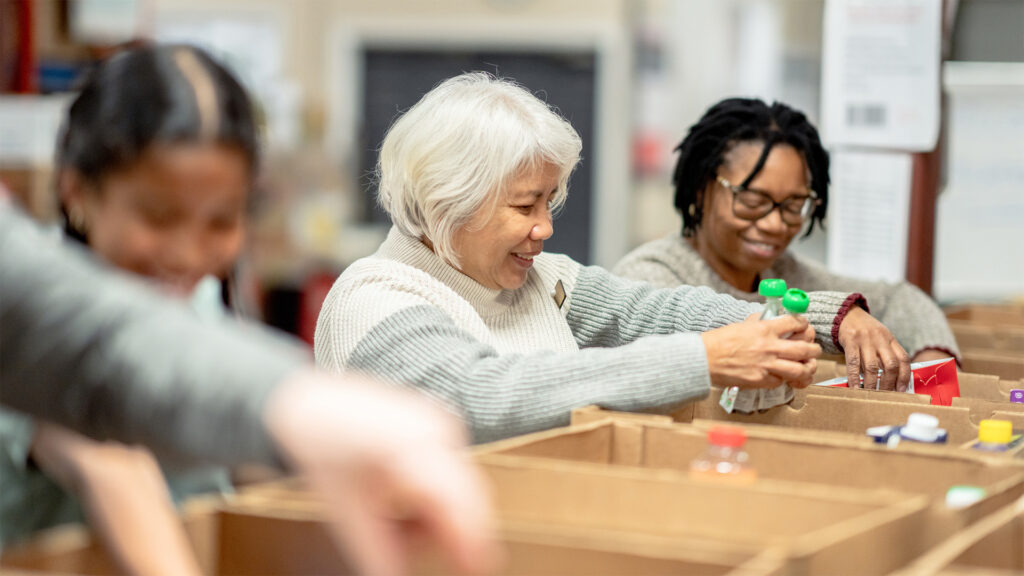Some older adults are excited about moving to senior living – freshly prepared meals, transportation to appointments, housekeeping and lots of friends await. Others see that transition as a loss of control. No matter the circumstance, or your age, change can be hard.
But these changes are also adventures – full of opportunity and unexpected rewards. If you’re helping an older adult with this big senior lifestyle transition, here are some tips to help guide you both through the change.
When to Look for Senior Housing
According to Melanie Bedell, Vice President, Sales, at Holiday by Atria, the best time to start thinking about senior living is yesterday.
“As we age there are milestones in our lives,” Bedell says. “We have kids, and we think, ‘Oh, I need to set up a living will.’ Or there’s a health scare and you think, ‘We should do our estate planning, so our kids aren’t burdened if something happens.’ But people wait until they have no choice before they’ll think about senior living.”
Looking into senior living options after a health-related event occurs leaves little time to research choices, and it may force a move to a more expensive and care-intensive facility.
According to a longitudinal study by the University of Missouri, older adults who lived in an independent living community lived longer and healthier lives than those who didn’t make the move. Falls and other health risks were prevented through early detection, and residents didn’t have to do potentially dangerous home maintenance. Healthy meals and regular opportunities for socializing and exercise also helped keep residents strong and mentally sharp.
Lori Popejoy, the lead researcher on the study, noted that older adults who opt to live at home – even as daily activities become more difficult and they face isolation – could possibly avoid the need to move to a nursing home by proactively moving into independent living.
Talking About Senior Living
As Popejoy notes, independent living can actually offer older adults more control, for longer. While there’s a lot to look forward to in retirement, the fear some older adults may have of losing their independence can make it hard to start a conversation about senior living options.
“There’s fear involved in any big change,” Bedell says. “Whether it’s starting at a new school, taking a promotion on the other side of the country, or moving out of a long-time home into a retirement community.” She suggests taking the pressure off of the conversation by starting with low-stakes questions, such as:
- What do you think about senior living?
- What have you heard about retirement communities?
- Have you done any research?
“Talking about senior living can be a casual conversation,” Bedell says, “rather than a response to a catastrophe.”
Making the New Space Home
Once a decision is made to move a parent to a retirement community, there’s still a lot to do – from touring communities to unpacking the last box. Here are some items to plan for, and approaches you can take to reduce stress for both you and your parent.
Touring Communities
When you first start researching senior living communities, it can feel overwhelming. There’s new jargon to learn – such as the difference between independent and assisted living – and the time it takes to learn about the many community options that lie within those categories.
Visiting a community in person will clear away a lot of the mystery. In addition to meeting with staff about what the community offers, you’ll immediately get a sense of the residents, how happy they are, and if it would be a good fit.
Selling a Home To Move to Senior Living
If there’s a home to sell, find someone to help guide that process, such as a Realtor® who specializes in senior home sales. This person will help the older adult in your life get the most out of their home sale – which is especially important when that income can be a big part of funding retirement.
Packing
It’s hard to look at a lifetime of accumulated possessions and know where to begin. The answer is to start small. Tackle one room at a time, and don’t do it alone. Whether you coordinate with family to host a packing party or hire a professional to run an estate sale, working with others will make the process easier.
In many senior living transitions, sitting with cherished items and recalling the special moments that they’re associated with is part of letting go. Make room for those feelings and help your parent find productive ways to part with those objects. For example, sharing an heirloom with a grandchild, selling a valuable antique, or donating items to people in need can all bring joy and clear up space.
Personalizing a Senior Apartment
No matter how attached people get to their homes, there are always things they’re glad to leave behind – whether it’s squeaky floorboards or a tub that’s difficult to get in and out of. Moving into a senior apartment offers older people an opportunity to refine their style and improve the accessibility of their living environment, without the expense and mess that comes with remodeling.
Here are a few steps for helping your older parent transition to a new environment:
- Take inventory of what’s included. If the apartment comes with furniture or appliances, save yourself the hassle of moving those items. Even small things, like spatulas, books and ink pens, can start to feel like clutter when you have too many.
- Bring favorites from home. Décor can do a lot when it comes to making a new space feel comfortable. When decorating a senior apartment, simply arranging favorite pieces of furniture as they were in a previous home, hanging cherished artwork and photos, or growing favorite houseplants can make a new place feel familiar.
- Take the opportunity to upgrade. Maybe Mom doesn’t love the old loveseat. This is an occasion to make her new space exactly what she’s always wanted.
- Make a friend in the community. This is important for both you and your parent. Senior living transitions can be difficult for everyone for various reasons, and having someone to talk to can make all the difference.
Transitioning to Retirement Living
If you’ve done your research in advance, take your time planning. This will give everyone a chance to process the change – and to prepare for the move itself.
“It doesn’t matter how old we are, the first 90 days of any big change are the hardest,” Bedell says. “For anyone who makes a move to senior living, there will be days that they love it and are grateful they don’t ever have to do dishes again – and there will be days when they want to go back to their yard and their house.”
Bedell recommends journaling as a way to process the feelings and changes. This provides new residents an opportunity to mourn for a previous time in their lives, while still recognizing the benefits of their new circumstance.
The same can be true for an adult child trying to offer support. Letting go of control and trusting that your parent will be okay can be hard. Bedell suggests maintaining your family routines and rituals, such as a weekly dinner, but take the opportunity to acknowledge that you’ve been able to sit and chat with each other without figuring out the grocery list or scheduling appointments.
Enjoy the Process
Though challenging, moving to a senior living residence creates opportunities to relive special moments and make new ones. Being kind to yourself and your parent as you navigate the transition will help it go more smoothly and set you both up for success in the new lifestyle after retirement.
Still exploring senior living options? Visit a Holiday community near you to learn more about what retirement living has to offer.







